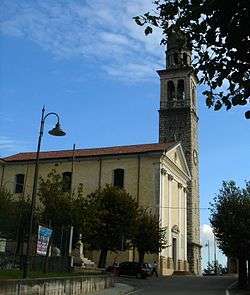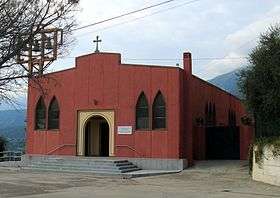Schism of Montaner

The term Schism of Montaner refers to events between 1967 and 1969. Almost all the residents of Montaner, a frazione in the municipality of Sarmede in the Province of Treviso, Italy, decided to renounce Catholicism and embrace the Orthodox religion, because they had great disagreement with their bishop of Vittorio Veneto, Monsignor Albino Luciani, the future Pope John Paul I.
History
The people did not agree with the decision of Mgr Luciani to appoint as new priest Father John Gava, after the death of the old priest Joseph Faè, on December 13th, 1966. People wanted, as new priest, Father Antony Botteon, who had for a long time assisted the old priest, and if this were not possible, they asked to have Father Botteon as vice-rector of the parish.
Mgr Luciani answered that, for a village as small as Montaner, a priest only was enough, and also that priests are not elected by the people, but appointed by their bishop only.
So, the bishop appointed as temporary rector the former Franciscan, Father Casimiro from Monselice, but the people didn’t want him. The last decision of Luciani was to appoint a new rector, Father Peter Venier, but the people, on September 12, 1967 closed Father Venier in the attic of the rectory. So Mgr Luciani arrived in Montaner, escorted by the Police and took the Holy Sacrament from the Church, leaving the Church unblessed.
The schism

The population then caused a schism and founded the Orthodox Church of Montaner. On December 26, 1967, the first Divine Liturgy was celebrated with the Orthodox Byzantine rite. The Orthodox priest, Father Claudio Vettorazzo was permanently installed in June 1969 and on September 7, 1969, the Orthodox church was blessed.
In 1994 their Father Claudio was imprisoned for legal and financial problems.[1]
Only after 1998 was the Orthodox Church of Montaner officially recognized by the Patriarchate of Constantinople, to use the Byzantine Rite. In 2000, a nunnery associated with the church was founded.
Today the Christian communities, Catholic and Orthodox, live in harmony, and the Orthodox parish is also frequented by immigrants from Eastern Europe.
See also
References
Further reading
- Valentina Ciciliot, Il caso Montaner. Un conflitto politico tra chiesa cattolica e chiesa ortodossa, Venezia - Ca' Foscari, 2004. (in Italian)
External links
- The schisme of Montaner in Youtube (in Italian)
- Reportage of TV RAI about Montaner (in Italian)